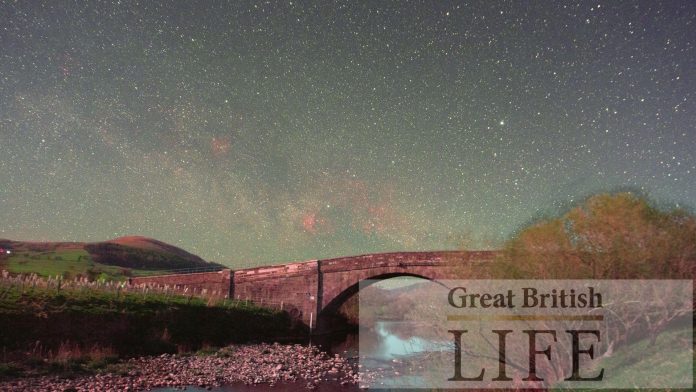Published:
6:00 PM February 2, 2022
Stunning photographs of the night sky taken by astronomer Robert Ince from Bamber Bridge.
For generations there was an expectation in pit villages that sons would follow fathers into the mine, but Robert Ince was always looking up, not down
His dad was an electrical engineer at mines in the North East and Nottinghamshire where Robert recalled his earliest experience of star gazing.
Robert with one of his telescopes
– Credit: Robert Ince
‘My fascination with the night sky began when I was about knee high,’ he said. ‘I got my first book when I was about five and one of my earliest memories is of sitting in the garden in the pit village where we lived, Blidworth, and looking up at the stars.
‘We were only about 150 yards from the pit head but the skies were dark and there so much you could see.
‘My parents saw my interest and bought me my first telescope from Tesco, a 60mm scope which I used in the garden and from my bedroom window.’
Robert went on to study physics and astronomy at university in Sheffield and then worked for the MoD but has always had a passion for the night sky. He moved to Lancashire when he took a job with BAe in 1998 and now lives at Bamber Bridge.
Light pollution means the Milky Way is visible much less often than it used to be
– Credit: Robert Ince
He now runs astronomy events at which he shares his passion with star gazers of all ages, and offers one-to-one astro photography sessions to help others take the sort of pictures you can see here.
‘My interest in the night sky has never left me, although it has waxed and waned as I’ve got older and family has come along,’ Robert said. ‘Early on it was very male-dominated and the few girls were well outnumbered but that has really changed and there is a much younger demographic now as well.’
He has also seen changes brought about by the Covid lockdowns. ‘In many ways that time made people reassess how they spent their leisure time,’ Robert added. ‘They were having to stay close to home and they started to notice things they’d not previously seen and it seems that a lot of people started to look up.
‘People going on walks in the evenings would be able to see more than usual because there were fewer aircraft con-trails in the sky so the skies were clearer. Lots of people were searching online and sending messages on social media to ask what certain objects in the sky were.’
But the biggest change he has witnessed since he first gazed up in wonder has been decidedly less positive for astronomers.
Star trails over the Orme Sight sculpture on Beacon Fell
– Credit: Robert Ince
‘The levels of light pollution have increased dramatically in recent decades,’ he said. ‘It’s the bane of an astronomer’s life. The light we use serves a purpose but so much of it is badly designed. I used to be able to see the Milky Way from my garden in Blidworth, now I can see it maybe one night in 100 and it’s a problem that could be completely removed.
‘People using lights for entertainment is fine, as long as they can be turned off, but often they’re allowed to shine throughout the night when nobody is going to see them. There have been some improvements in street lighting since the old sodium lights started to be replaced by LED lighting which is more controllable and uses less power, but because of that, local authorities often install more of them.’
The Milky Way over Beacon Fell
– Credit: Robert Ince
Find out more
Robert’s stargazing sessions are for anyone with an interest, from complete beginners to people who know what they are looking at. They are held for groups of about 30 in dark sky areas such national parks, or on Beacon Fell. He provides all the equipment and will point out some of the key things visible, anyone attending just needs to wrap up warm and bring a torch.
For more information, go to stargazingevents.com.
Robert uses a laser to point out objects in the night sky over Beacon Fell
– Credit: Robert Ince





